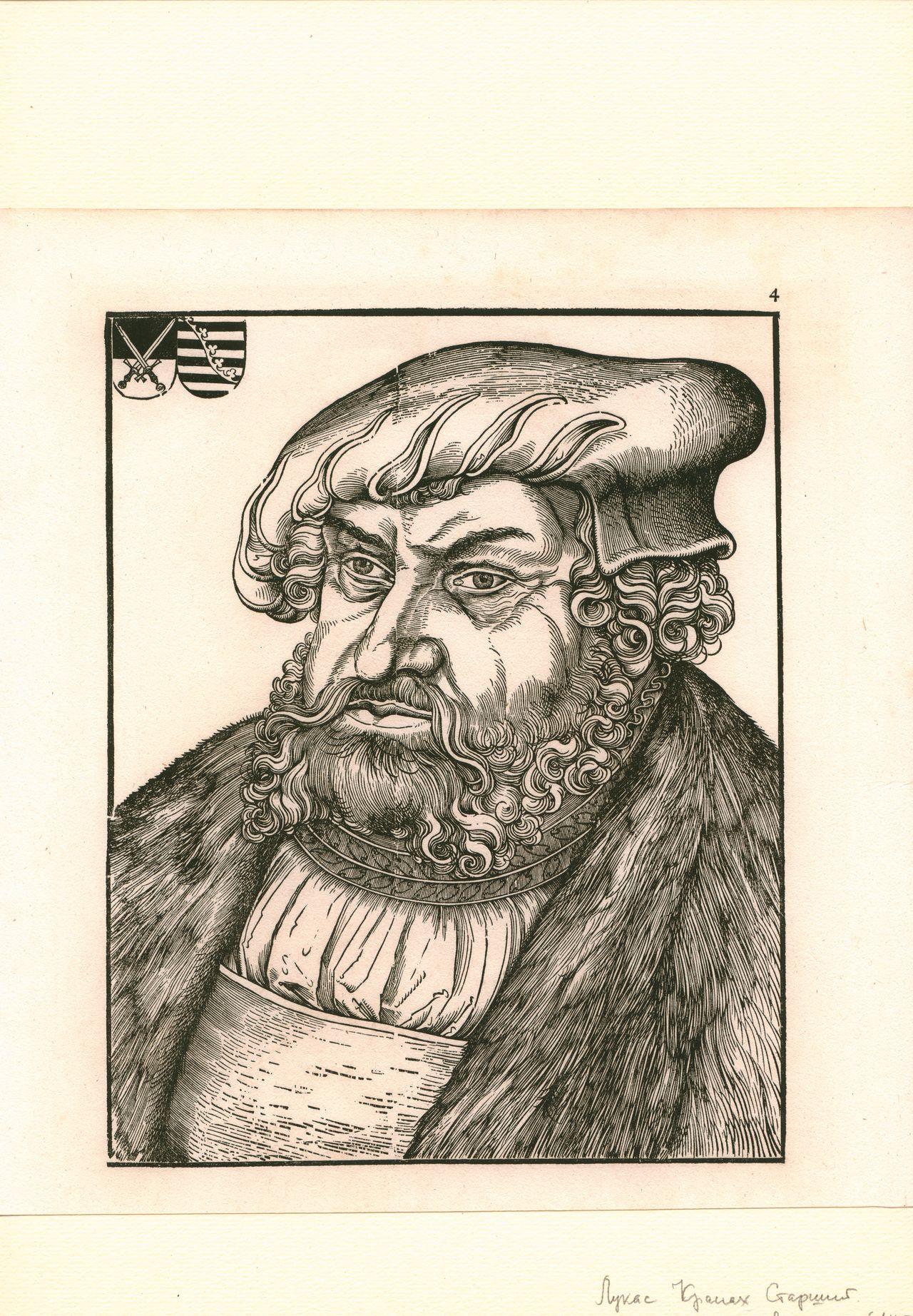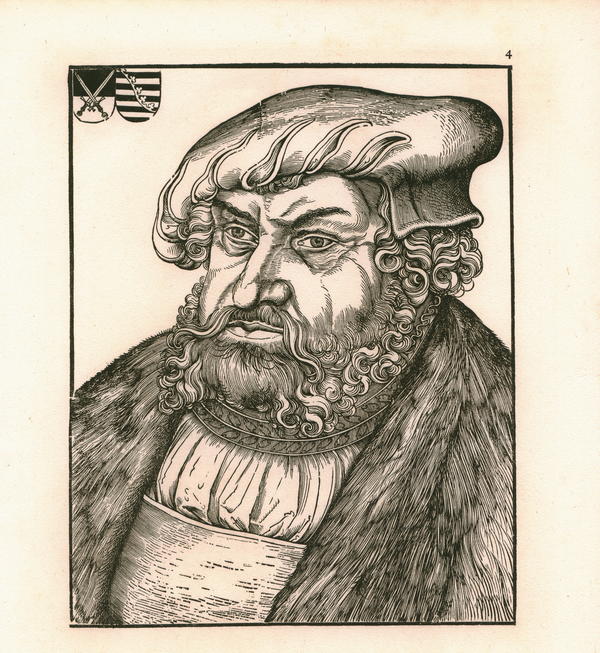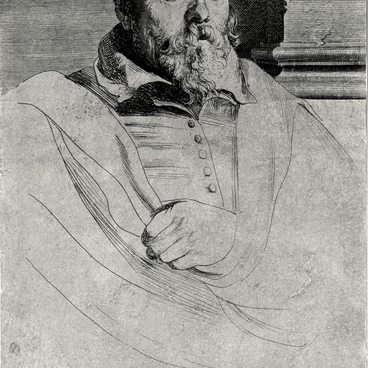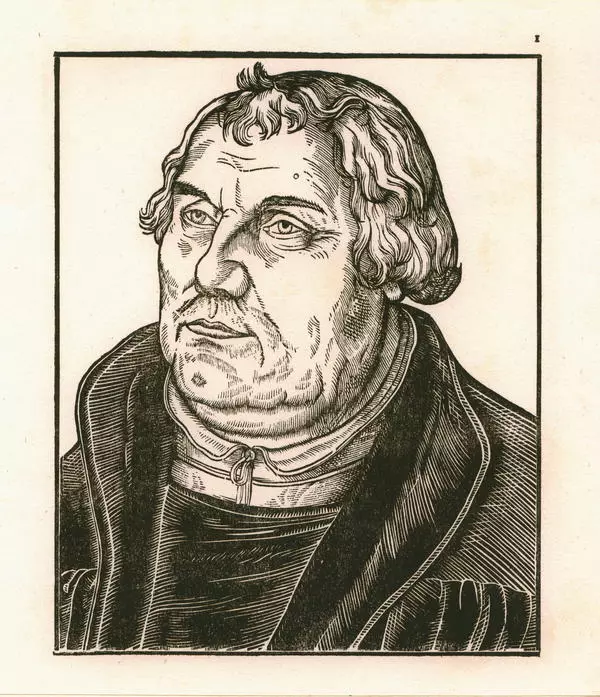The Portrait of Johann the Steadfast was engraved on wood by the German artist Lucas Cranach the Elder. This graphic technique, one of the oldest ones, is called wood block printing or xylography. The artist drew the subject in pencil on a pear or beech wood board powdered with chalk. Then he used a sharp knife and a small chisel, hold them tight in the hand and carved or carefully chiseled the spaces between the pencil lines. Xylography was always carved towards oneself. The image on the board was made reverse with regard to the paper print. The easiest lines in xylography were direct lines along the grain, but the most difficult and risky were diagonal lines. They required an effort that posed the risk for the artist to destroy the image or to cut himself. Therefore, artists preferred not to make many small details and transitions: the more the lines intercrossed, the less expressive the engraving became.
Johann the Steadfast (Johann der Beständige)
Creation period
15th-16th centuries
Dimensions
32,7x30,7 cm
sheet: 32.7x30.7 cm; image: 27.8x22 cm
sheet: 32.7x30.7 cm; image: 27.8x22 cm
Technique
paper, xylography
Collection
1
Open in app#3
Lucas Cranach the Elder
Johann the Steadfast
#2
#6
(Portrait of John the Steadfast, Elector of Saxony, Lucas Cranach the Elder. img via: commons.wikimedia.org
The xylographic portrait is not the only representation of Johann the Steadfast made by Cranach the Elder. Another known one is an oil-on-wood portrait painted in 1515. At that time period Johann together with his brother Friedrich the Wise ruled the Saxon lands. On the painting, Johann looks younger. One can assume that Cranach created the xylography at a later date, during the hard times when Martin Luther started the Reformation, the movement against malpractices of the Roman Catholic Church and indulgency trading.
#8
In 1525 Friedrich died and Johan became a sole ruler of Saxony and Thuringia in the status of the Prince-Elector entitled to elect the Emperor. He followed Martin Luther and in August 1525 told the clergy of his country to preach pure Evangelicalism. For apostacy from Catholicism the Emperor Karl V Habsburg threatened to deprive Johann of the lands and his position, but that did not move the Saxon ruler from his determination. Over several years Johann the Steadfast concluded peace with Earl Philipp of Hessen who tried to reconcile the followers of Protestantism with each other. Finally, they succeeded, and the Emperor had to reckon with the new force. In 1532, when the 200,000-strong Turkish army moved towards Vienna, Karl V had to seek support with the Protestants. In the same year the Nuremberg Peace Treaty was concluded.
#10
The German artist and painter Lucas Cranach the Elder also supported the Reformation in Germany and was a friend of Martin Luther. He illustrated Protestant proclamations, painted portraits of his contemporaries and worked hard in his own art studio. Cranach managed to combine German Gothic traditions, major principles of Renaissance art and non-standard coloristic solutions. He knew how to harmoniously blend his characters into the landscape and he set a new spirit of the portrait: with sympathy to the model, but without excessive admiration and attempts to penetrate into the inner world. Portraits of the Prince-Elector were exactly like that.
#11
The Irbit State Museum of Fine Arts
read morehide
00:00
00:00
1x
Johann the Steadfast (Johann der Beständige)
Creation period
15th-16th centuries
Dimensions
32,7x30,7 cm
sheet: 32.7x30.7 cm; image: 27.8x22 cm
sheet: 32.7x30.7 cm; image: 27.8x22 cm
Technique
paper, xylography
Collection
1
Open in app
Share






